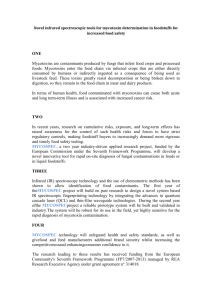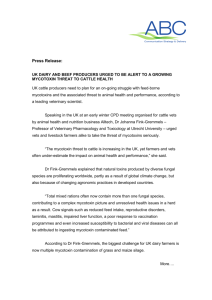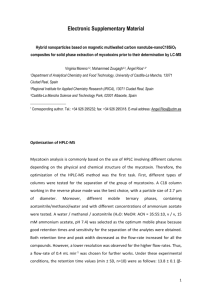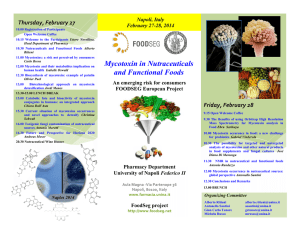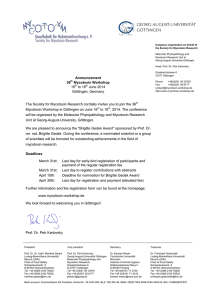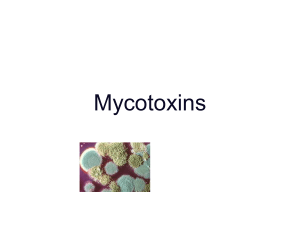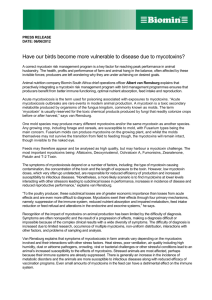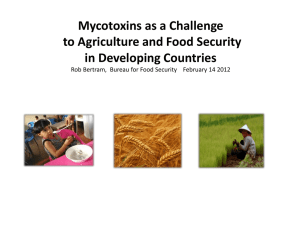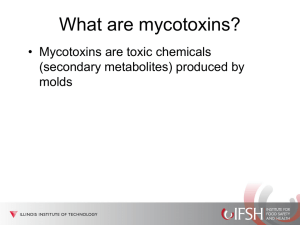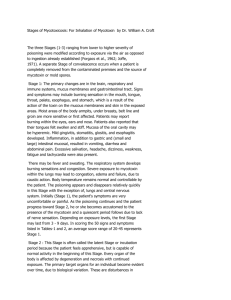Additives and Contaminants in Foods
advertisement
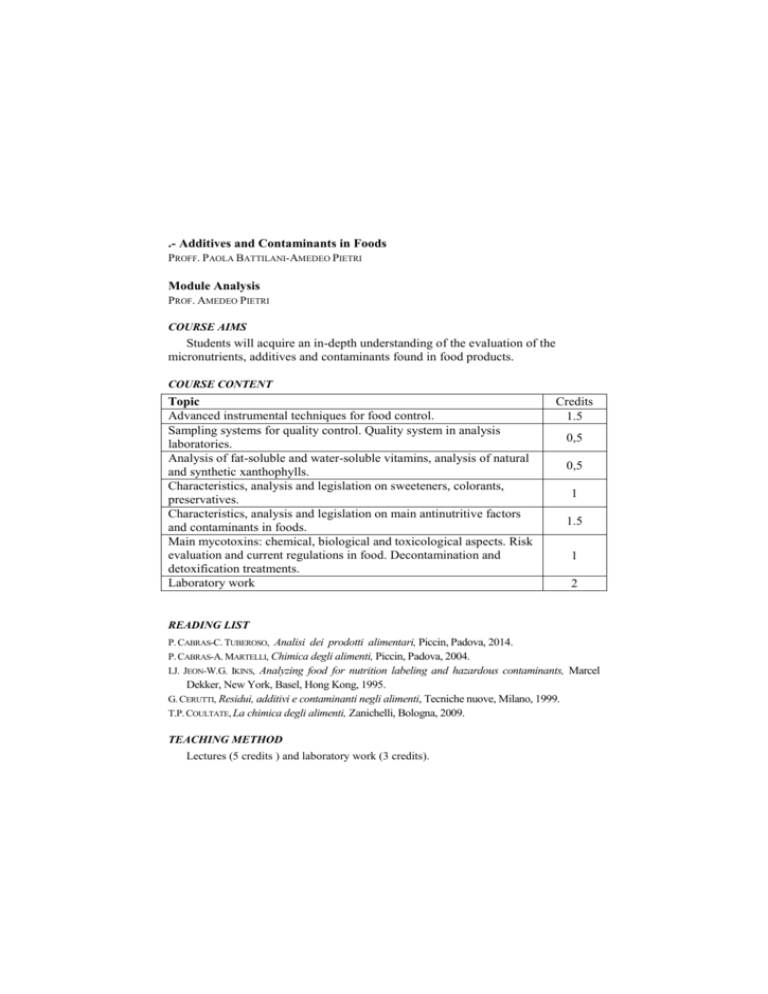
.- Additives and Contaminants in Foods PROFF. PAOLA BATTILANI-AMEDEO PIETRI Module Analysis PROF. AMEDEO PIETRI COURSE AIMS Students will acquire an in-depth understanding of the evaluation of the micronutrients, additives and contaminants found in food products. COURSE CONTENT Topic Advanced instrumental techniques for food control. Sampling systems for quality control. Quality system in analysis laboratories. Analysis of fat-soluble and water-soluble vitamins, analysis of natural and synthetic xanthophylls. Characteristics, analysis and legislation on sweeteners, colorants, preservatives. Characteristics, analysis and legislation on main antinutritive factors and contaminants in foods. Main mycotoxins: chemical, biological and toxicological aspects. Risk evaluation and current regulations in food. Decontamination and detoxification treatments. Laboratory work Credits 1.5 0,5 0,5 1 1.5 1 2 READING LIST P. CABRAS-C. TUBEROSO, Analisi dei prodotti alimentari, Piccin, Padova, 2014. P. CABRAS-A. MARTELLI, Chimica degli alimenti, Piccin, Padova, 2004. I.J. JEON-W.G. IKINS, Analyzing food for nutrition labeling and hazardous contaminants, Marcel Dekker, New York, Basel, Hong Kong, 1995. G. CERUTTI, Residui, additivi e contaminanti negli alimenti, Tecniche nuove, Milano, 1999. T.P. COULTATE, La chimica degli alimenti, Zanichelli, Bologna, 2009. TEACHING METHOD Lectures (5 credits ) and laboratory work (3 credits). ASSESSMENT METHOD Oral final examination. NOTES Additional reading materials will be set during the course. Module Mycotoxins PROF. PAOLA BATTILANI COURSE AIMS The learning objectives are: 1) To identify mycotoxin producing fungi and understand their ecological needs; 2) To examine the role of mycotoxin producing fungi in maize, wheat and grapes food chains, with signs on peanuts, pistachio nuts and apples and define preventive and corrective actions along the chain; 3) To underline the emerging problem of mycotoxin contamination in products of animal origin; 4) To understand the relevance of mycotoxins worldwide. Practical work will use biological assays to isolate and identify mycotoxin producing fungi at genera and species level, with signs on molecular detection. Besides, the application of analytical methods for mycotoxin quantification will be shown. COURSE CONTENT Relevance of Mycotoxins worldwide. Main mycotoxin producing fungi and their ecological needs. Fusarium spp and Fusarium Head Blight in wheat; optimised wheat chain management to minimise mycotoxin contamination. Signs on ergot and ergot alkaloids. Fusarium spp and Fusarium Ear Rot, Aspergillus section Flavi in maize; optimised maize chain management to mitigate mycotoxin contamination. Aspergillus section Flavi in nuts; signs on chain management to mitigate mycotoxin contamination. Aspergillus section Nigri in grapes; optimised grapes chain management to mitigate mycotoxin contamination. Penicillium expansum in fresh products with focus on apples. Penicillium spp. in pork stored meat and cheese. TUTORIALS. Application of biological methods for fungi identification. Signs on CFU 1.0 1.0 1.0 1.0 molecular methods. TUTORIALS. Application of analytical methods for mycotoxin quantification 1.0 READING LIST Specific reading materials will be set during the course. TEACHING METHOD Lectures, seminars, guided practical work. ASSESSMENT METHOD Final oral exam. Prof. Paola Battilani is available to meet students after class at the Institute of Entomology and Plant Pathology.

